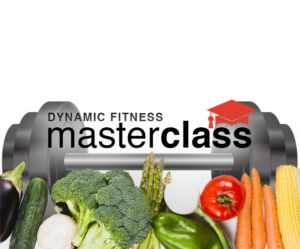Video Version
Audio Version
Caaaarrrrdddiiioooo!
Kind of sounds like the World Cup commentator famously saying “Goooooooooaaaaaaaalllllllll!”
Alright, all joking aside, when we started our fitness journey a decade ago we used to think cardio was the end all be all magic potion that lead to fat loss.
Sure, we thought weight training would help build muscle and strength and our diet would aid in fat loss, but we always put cardio on a pedestal.
But, it wasn’t until we started digging into the scientific literature, hiring coaches, understanding physiology, working with over a thousand clients, trial and error in our own fitness journeys, and finally realizing that cardio is just a tool to help aid in fat loss.
You much rather want to focus on a sound nutrition program that’s going to put you in a negative calorie deficit, then focus on a proper resistance training program that’s going to help retain muscle mass, and then decide if you want to strategically use cardio as a tool to aid in fat loss.
In this article, we will go over 5 cardio workouts that lead to fat loss, examples of the workouts, and how much of it we recommend doing.
Cardio Workout 1- High Intensity Interval Training (HIIT)
Benefits-
- Improved general and cardiovascular health [1]
- Increased glycogen depletion (breaking down stored carbs in liver, brain, and muscle) [2]
- More time efficient [3]
- Potentially aid in more fat loss, but more likely seen in women [4]
- It’s more exciting 😉
Drawbacks-
- Difficulty due to people not being conditioned to do High Intensity Intervals
- Adherence and consistency is an issue because HIIT is hard and similar to a weight training workout, so it may be hard to adhere to if overused
- Negative Interference affect with weight training [5]
- Limited frequency due to the above negative interference affect, recovery, and fatigue issue with weight training
Workout Examples-
- Sprints
- Car/Sled/Prowler Pushes
- Mock Wingate stationary bike sprints
- Recumbent and stationary bike sprints
- Battle Ropes
How Much to Do-
It all depends on how many times a week you are weight training, but we wouldn’t recommend more than 2-3 times a week and if possible separate HIIT cardio from weigh training days.
Cardio Workout 2- Metabolic Conditioning Work (MCW)
Benefits-
- Great circuit style workouts for those that don’t like set and structured weight training programs
- Fun, challenging, and intense workouts that could help with adherence and consistency
- Usually this is a group setting or class kind of like Cross-Fit, so it helps with the comradery of people supporting and motivating each other
Drawbacks-
- Hard to progressively overload each workout and thus you may be limiting your strength and muscle mass gains
- Sort of like HIIT, frequency of MCW, difficulty, and negative interference affect could be issues with formal weight training
Workout Examples-
- Circuit style workouts
- Calisthenic and bodyweight style workouts
- Body pump classes
- Met Con CrossFit style workouts
How Much to Do-
This again depends on how many days you are weight training per week, what the total training volume is each week, and your specific/individual goals, but we recommend 2-4 workouts per week.
Cardio Workout 3- High Intensity Steady State (HISS)
Benefits-
- You get a good amount of the similar benefits from HIIT (see above)
- Challenging and intense and for some this may be enjoyable and could lead to adherence and consistency which thus will lead to results
Drawbacks-
- You get a good amount of the similar drawbacks from HIIT (see above), just not as severe as the intensity is a step down
Workout Examples-
- Fast paced jog on a treadmill
- Fast paced strides on an elliptical
- Fast paced steps on a step mill
- Hard running
- Fast paced cycling
- Swimming
How Much to Do-
With HISS, you can get away with doing a bit more than HIIT since its easier to recover from and not as intense, so we recommend anywhere from 2-4 days per week and depending on how many days you are weight training.
Cardio Workout 4- Moderate Intensity Steady State (MISS)
Benefits-
- Much easier to recover from HIIT, MCW, and HISS
- Easier on the joints and ligaments when actually performing the workouts
- Frequency and duration can be increased
Drawbacks-
- If too much MISS is performed with weight training and a poor diet, there could be negative complications
- Sometimes its tough to gage the moderate intensity on certain cardio machines/modalities
Workout Examples-
- Moderate-fast paced walk or cycling (machines or outdoors)
- Moderate-fast paced strides on elliptical
- Moderate-fast paced steps on step mill
How Much to Do-
Since MISS is less negatively impacting on the joints, we recommend doing this 4-6 times per week and the duration and frequency all depends on individual goals and amount of weight training sessions per week
Cardio Workout 5- Low Intensity Steady State (LISS)
Benefits-
- Lazy persons cardio 😉 (joke)
- Very light and easy on the joints and ligaments
- Easy to recover from and may actually help reduce soreness
- Duration and frequency can be increased
Drawbacks-
- Back to lazy persons cardio, you may have to do a lot of LISS to get adequate calories expended
- Too much of anything isn’t a good thing, so just because its easy and you can recover from it, doesn’t mean to abuse it
- LISS cardio at times leads people to have the mindset that they can do this daily along with weigh training for 1-2 hours, but this could be counterproductive
Workout Examples-
- Brisk walking
- Slow cycling, slow strides on elliptical and slow steps on step mill
- Walking on an incline
How Much to Do-
If you really wanted to, you can probably get away with doing LISS daily, but again, all depends on goals, how much of a negative calorie deficit you are in with your diet, and how many days a week you are weight training.
Final Thoughts
We hope this article on 5 Cardio Workouts that Lead to Fat Loss helped shed some light on the following:
- Cardio should be used as a tool to aid in fat loss
- Always put your nutrition and weight training program first
- Notice the common theme in all of these cardio workouts, it all depends on your individual goal, recovery rate (managing fatigue), schedule, preferences, how many times you weight train per week, etc
Now that you got all this down, we encourage you to experiment with all 5 workouts and see what you enjoy the most and we wish you the best of luck in getting long lasting and sustainable results in your fitness journey.
What if you could transform your body and health in just 8 weeks?
Our new Dynamic Fitness Masterclass is literally over 10 years of knowledge of hard-won, real-world results from working with over 1000 clients. Luckily for you, this expedites the process for you getting in the best shape of your life.
And we thought it would be a great fit for you and we think you should check it out HERE
References:
[1] Gibala et al. Physiological adaptations to low volume, high intensity interval training in health and disease. 2012
[2] Baechle, Thomas R and Earle, Roger W. Essentials of Strength Training and Conditioning/ National Strength and Conditioning Association. USA: 2008 by the National Strength and Conditioning Association
[3] Metcalfe et al. Towards the minimal amount of exercise for improving metabolic health: beneficial effects of reduced-exertion high-intensity interval training. European J applied Physio. 2011; Trapp et al. The effects of high intensity intermittent exercise training on fat loss and fasting insulin levels of young women. Int J of Obesity. 2008; Burgomaster et al. Similar metabolic adaptations during exercise after low volume sprint interval and traditional endurance training in humans. J Physiol. 2008
[4] De Feo. Is high intensity exercise better than moderate intensity exercise for weight loss? 2013; Astorino TA et al. Effects of periodized high intensity interval training on body compositions and attitude towards hunger in active men and women. 2017
[5] Wilson, J.M., et al., Concurrent Training: A Meta Analysis Examining Interference if Aerobic and Resistance Exercise. J Strength Cond Res, 2011; Kingsley, MI., et al., Moderate-Intensity Running Causes Intervertebral Disc Compression in young adults. Med Sci Sports Exerc, 2012.


